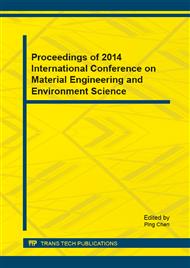p.210
p.217
p.224
p.229
p.234
p.240
p.245
p.251
p.255
Preparation and Performance of β-Sialon/Si3N4 Composite Ceramics for Solar Heat Absorber
Abstract:
β-Sialon/Si3N4 composite ceramic were prepared from starting materials of α-Si3N4, AlN and Al2O3 by pressureless sintering. The physical properties, phase composition and microstructure were tested by modern testing technology. The effect of different additives such as Y2O3, La2O3 and borax on the sintering temperature and physical properties was studied. The results show that D3 is the best formula, firing shrinkage rate of the sample is 14.14%, water absorption 3.16%, porosity 9.02%, bulk density 2.85g·cm-3 and bending strength 193.87MPa after firing at 1580°C. XRD analysis indicates that the main phases of D3 are β-Sialon, β-Si3N4 and corundum. SEM analysis shows that the microstructure of D3 sample is quite dense and the pores distribution is uniform, the diameter of the pore is about 1~5μm. β-Sialon/Si3N4 composite ceramic has high bulk density, bending strength and fine microstructure, which is a new choice of the heat absorb material for solar thermal power generation system.
Info:
Periodical:
Pages:
234-239
Citation:
Online since:
November 2014
Authors:
Price:
Сopyright:
© 2014 Trans Tech Publications Ltd. All Rights Reserved
Share:
Citation:


